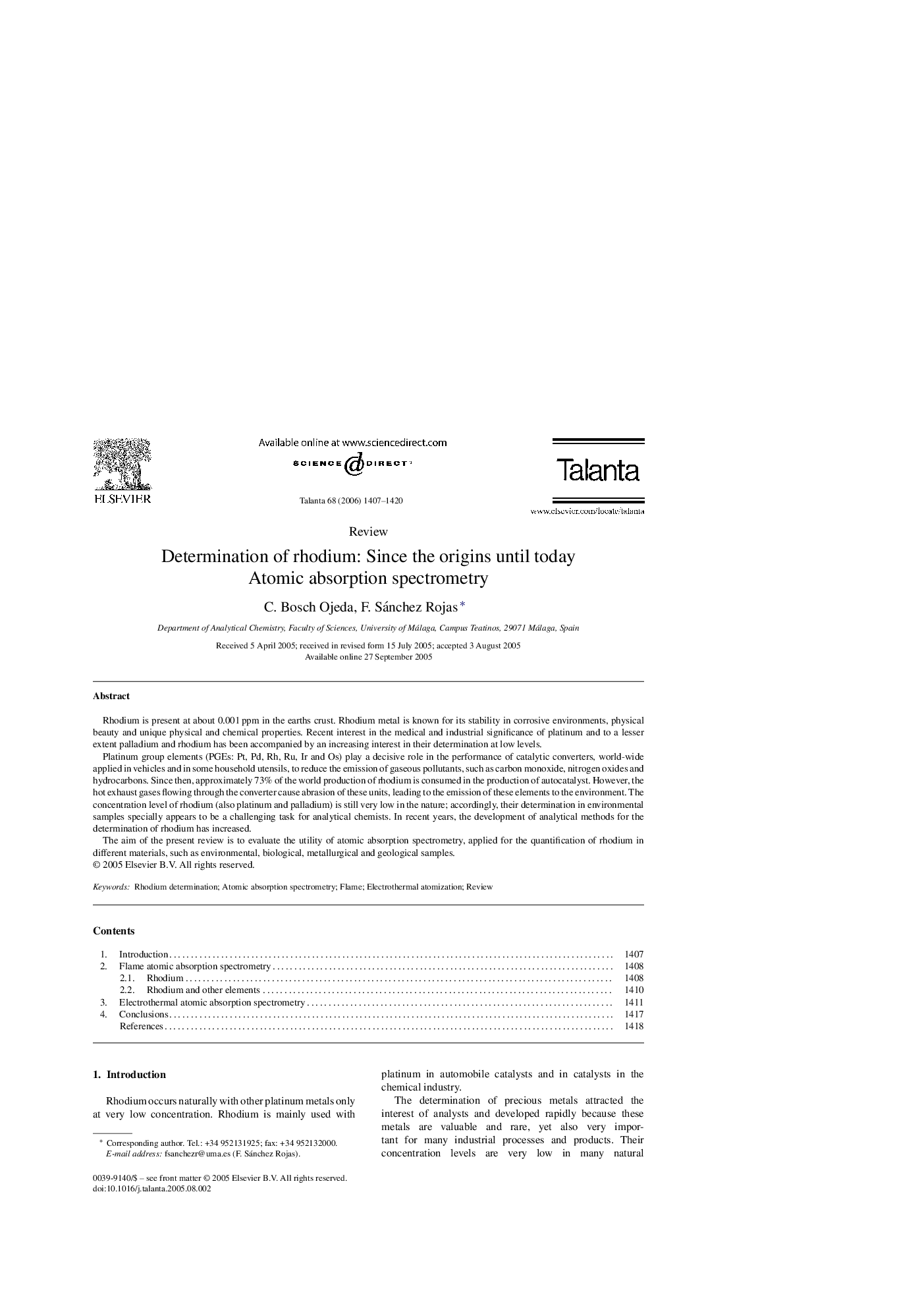| Article ID | Journal | Published Year | Pages | File Type |
|---|---|---|---|---|
| 1246554 | Talanta | 2006 | 14 Pages |
Rhodium is present at about 0.001 ppm in the earths crust. Rhodium metal is known for its stability in corrosive environments, physical beauty and unique physical and chemical properties. Recent interest in the medical and industrial significance of platinum and to a lesser extent palladium and rhodium has been accompanied by an increasing interest in their determination at low levels.Platinum group elements (PGEs: Pt, Pd, Rh, Ru, Ir and Os) play a decisive role in the performance of catalytic converters, world-wide applied in vehicles and in some household utensils, to reduce the emission of gaseous pollutants, such as carbon monoxide, nitrogen oxides and hydrocarbons. Since then, approximately 73% of the world production of rhodium is consumed in the production of autocatalyst. However, the hot exhaust gases flowing through the converter cause abrasion of these units, leading to the emission of these elements to the environment. The concentration level of rhodium (also platinum and palladium) is still very low in the nature; accordingly, their determination in environmental samples specially appears to be a challenging task for analytical chemists. In recent years, the development of analytical methods for the determination of rhodium has increased.The aim of the present review is to evaluate the utility of atomic absorption spectrometry, applied for the quantification of rhodium in different materials, such as environmental, biological, metallurgical and geological samples.
